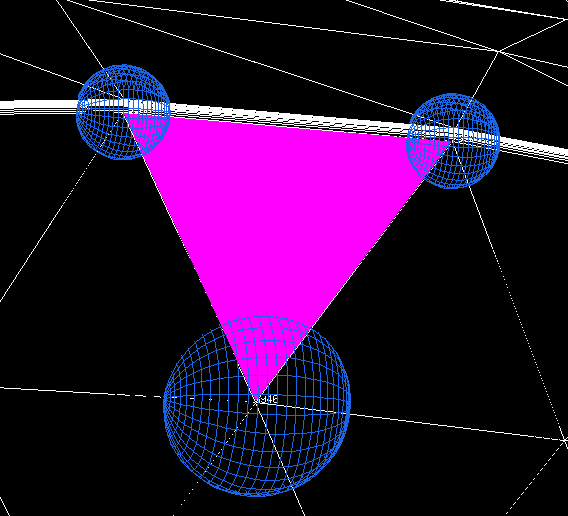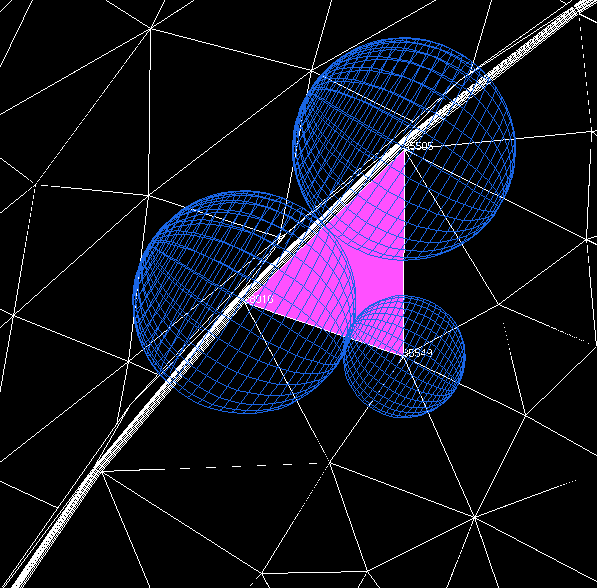Hello,
I’m working on a mixed mesh tetra/prisms/pyramids of a nozzle. Basically the prisms are the boundary layer inside the nozzle, which I want to be preserved, and the rest of the domain is tetra.
I provide MMG an isotropic metric by using the anisotropic algorithm (with equal eigenvalues, metric of the type x 0 x 0 0 x).
My question is about the metric at the nodes at the interface between prisms and tetras. I post the picture given by visualization with medit of a triangle with 2 vertices which are at the interface with prisms, and one internal vertex. This is what I ask for: a smaller size around these two vertices than at the internal one.
What I obtain is the good size for the internal nodes, but the nodes at the interface stays “fixed”. Since I use a hgrad greated than the defaul one, I was expecting maybe a cell presenting a sort of anisotropy, to be able to keep a smaller size at the boundary.
What I would like to have is a more gradual change of size between the prismatic interface and the tetraedral interior part of the mesh, by keeping my metric prescription isotropic-like. Do you have any suggestion on how I can do that?
Thank you a lot!
Francesca


